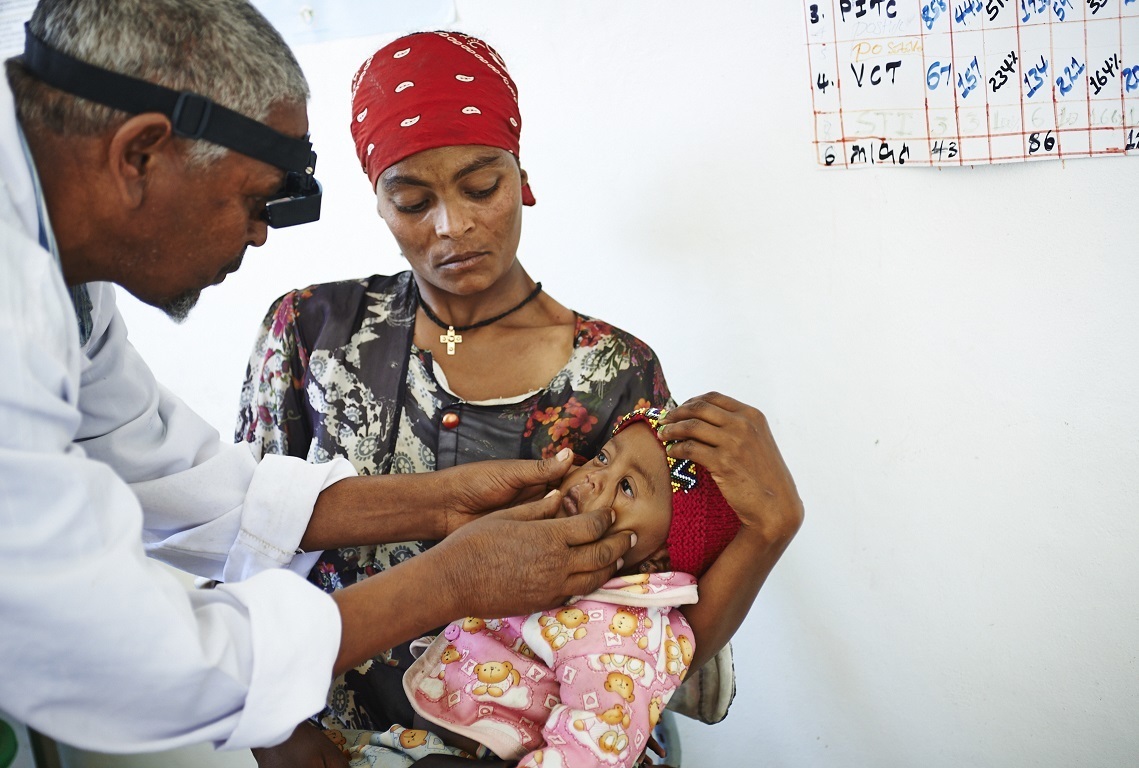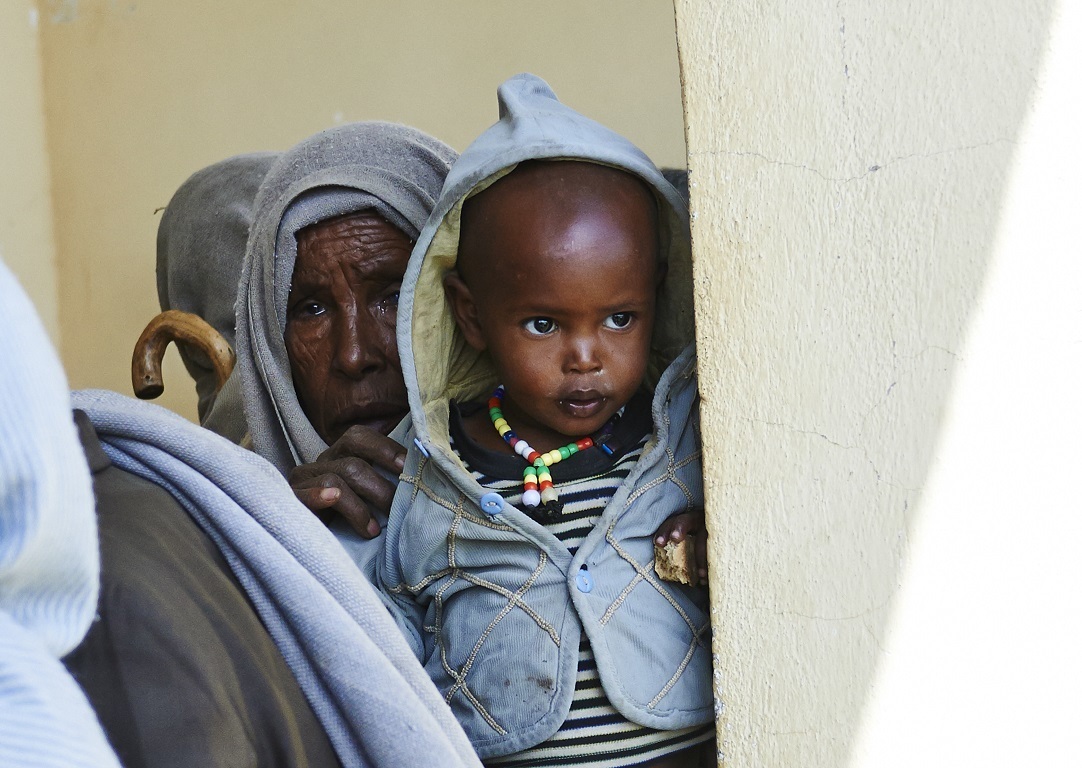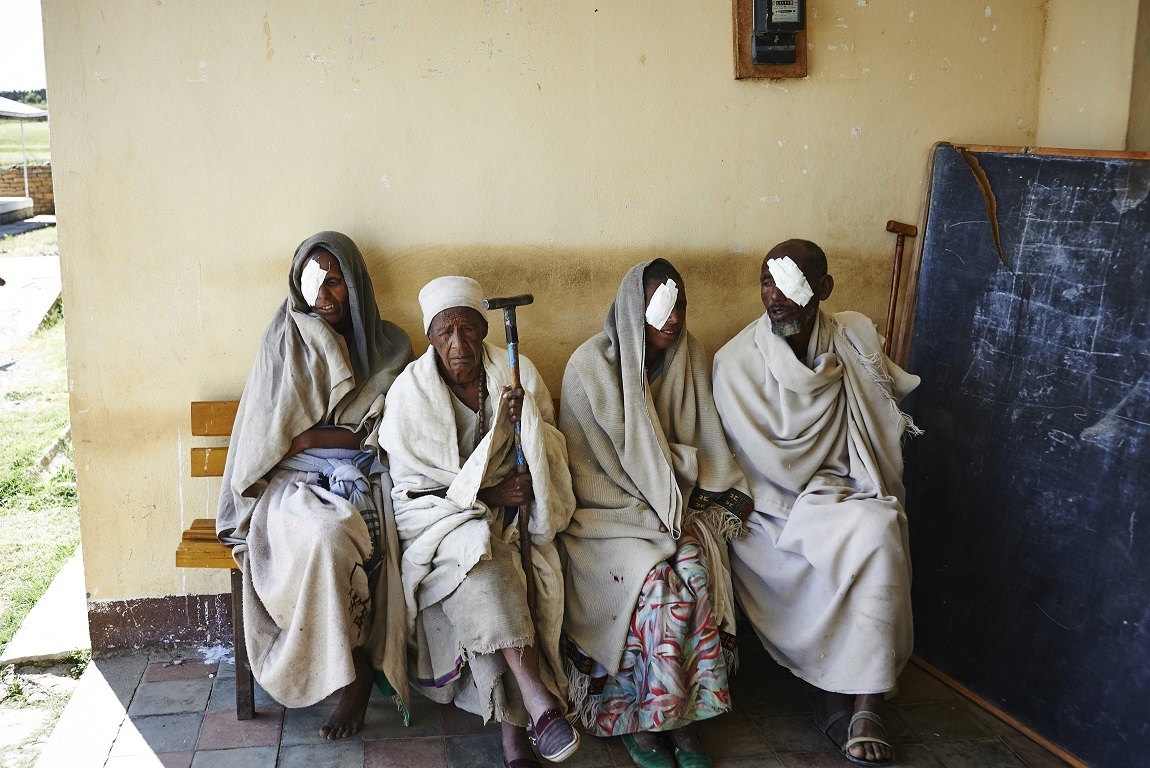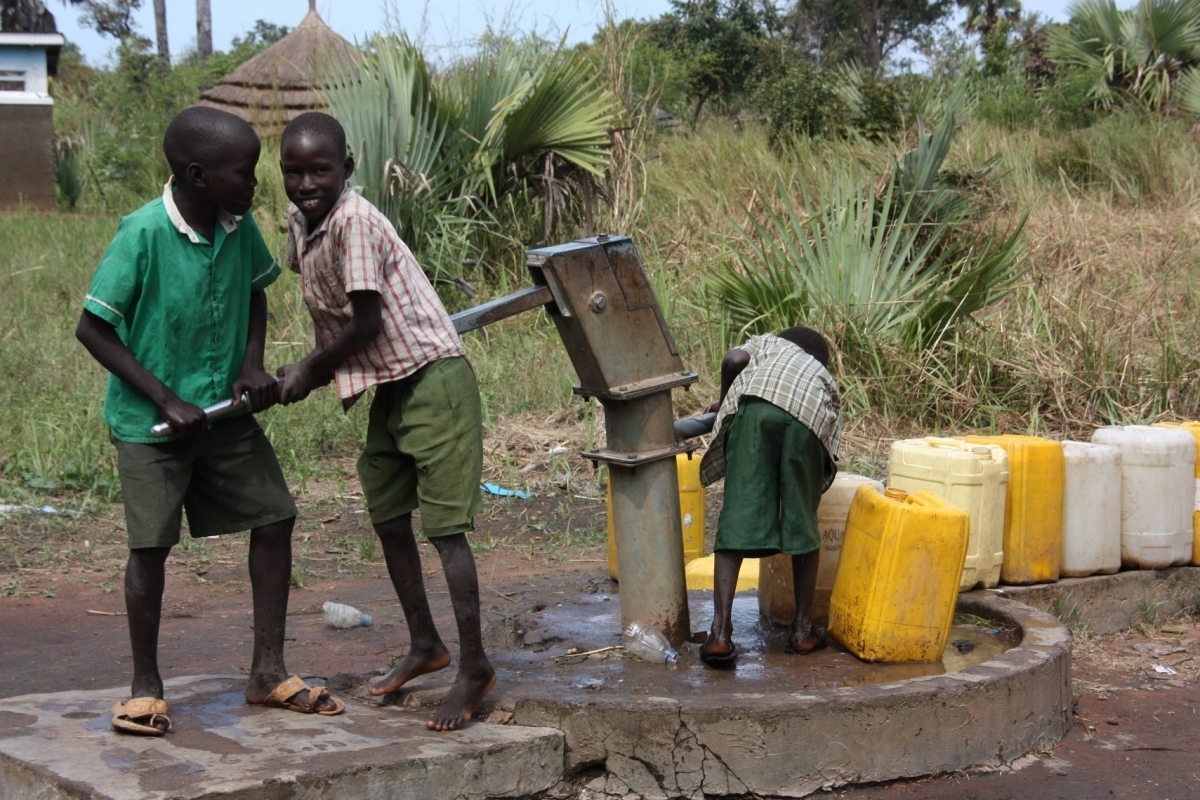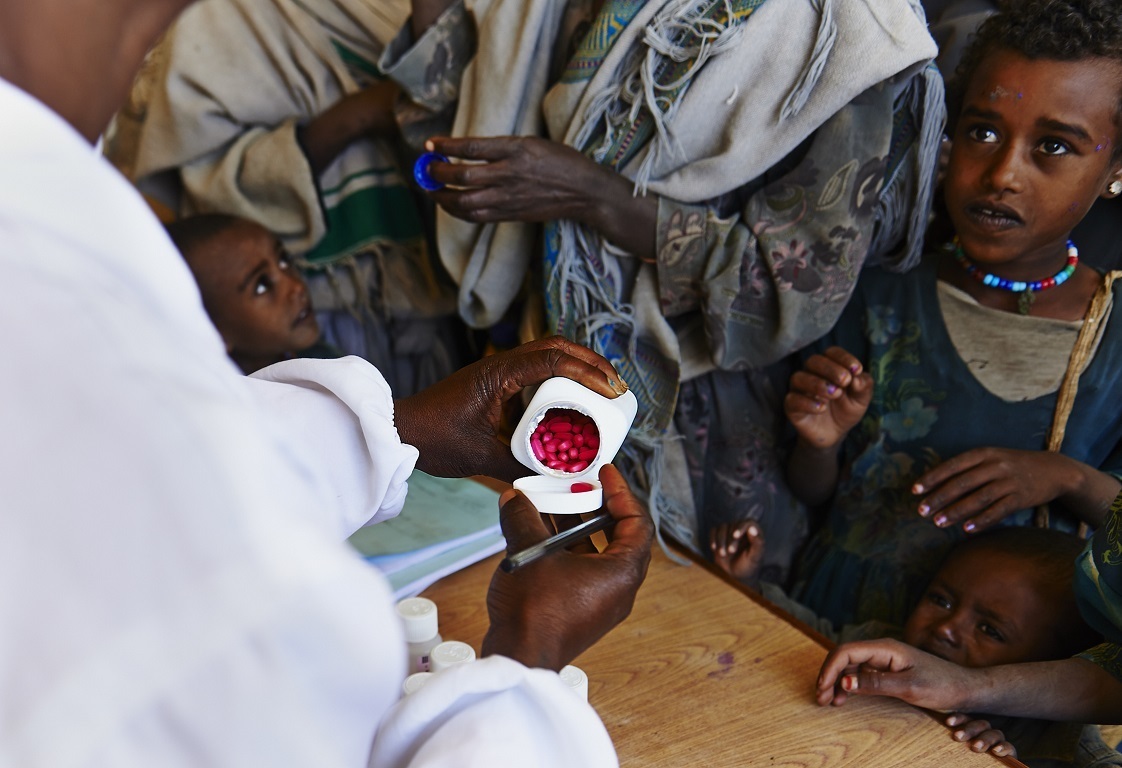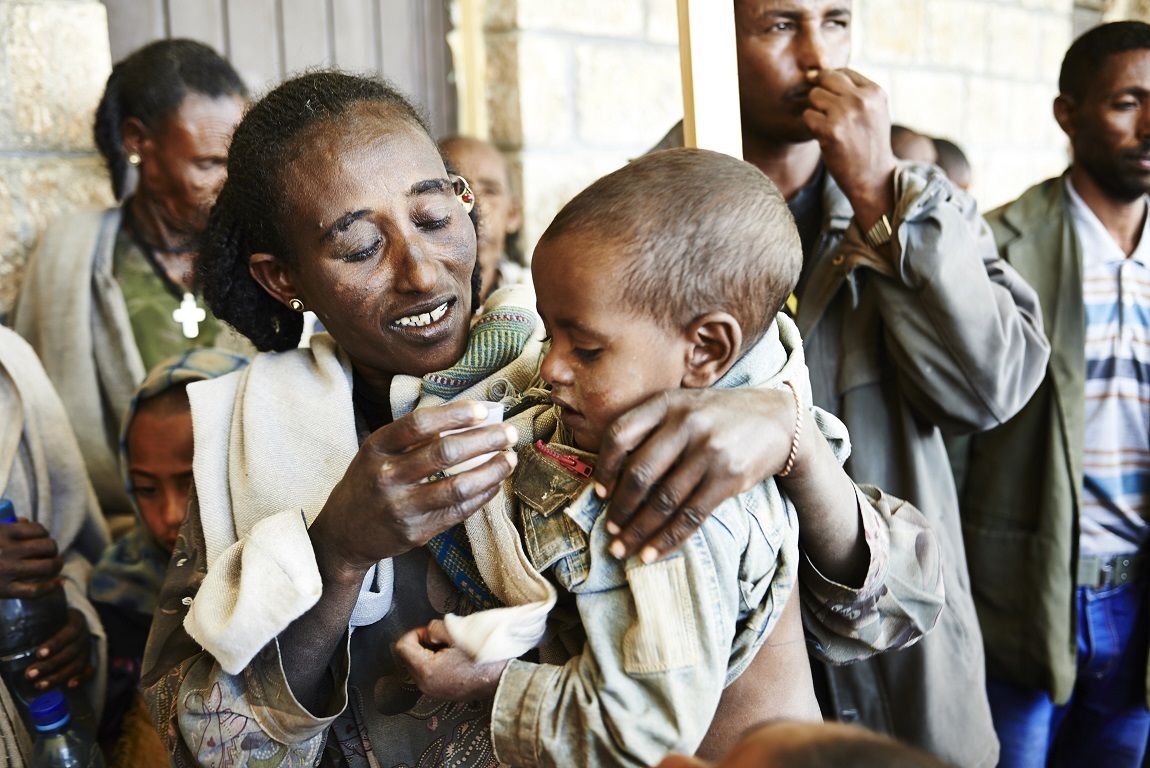Clean water, antibiotics and surgery: How to eliminate blinding Trachoma by 2020
Trachoma is the leading infectious cause of blindness worldwide and it mainly affects women and children in developing countries. One million people have lost their vision because of Trachoma and every 15 minutes another person goes blind from this preventable disease. Globally more than 200 million people live in endemic regions and are at risk of infection. Ethiopia is one of the most severely affected countries – in many villages more than 40% of the population are infected by Trachoma.
It is a disease of poverty that is endemic in remote underserved areas where people live in overcrowded conditions with poor personal hygiene and limited access to water, sanitation and health care. Trachoma is caused by the bacterium Chlamydia trachomatis, which is transmitted from one infected person to another through contaminated fingers, fomites and moisture seeking flies.
Repeated infections in early childhood lead to blurred vision, intense itchiness in the eyes and severe eye pain. In the advanced stage of Trachoma, which is known as Trachomatous Trichiasis (TT), the eyelids turn inwards and the lashes rub on the eyeball. This way the eyelashes scratch the cornea and scar it, which causes tremendous pain with each blinking action. Over time, the patients’ vision becomes more and more cloudy and if not treated early enough, they irreversibly go blind.
Trachoma is one of seven neglected tropical diseases (NTD) that are to be eliminated by the year 2020. Currently a Global Trachoma Mapping Project (GTMP), funded by the UK government, is conducted in suspected endemic regions. It is the largest mapping exercise ever undertaken in public health history to map the distribution of a disease. After the completion of the mapping project, the disease will be tackled worldwide by applying a strategy that involves access to clean water, awareness about personal hygiene, distribution of antibiotics and eye lid surgeries.
01 March:
Due to a severe shortage of ophthalmic medical staff, patients in developing countries often have to walk for several hours until they reach a hospital or a health post. Credit: LIGHT FOR THE WORLD/ Aleksandra Pawloff
02 Assefa with mother:
Assefa’s mother had noticed that her one-year-old-daughter’s eyes were reddened and streaming. She was very scared that Assefa might have a severe illness, but she did not know how to help her. Usually there are no ophthalmologists or ophthalmic nurses operating at the local health centre. So she was very glad when she learnt that a team from the distant eye clinic in Quiha planned an outreach programme in her village Gamera. Credit: LIGHT FOR THE WORLD/ Aleksandra Pawloff
03 Examination Assefa:
As soon as the team had arrived, Assefa’s mother went to the health centre and had her daughter’s eyes examined. The diagnosis was quickly made: Assefa is suffering from Trachoma which can easily be treated at an early stage. The girl will receive antibiotics and the mother has to make sure that she regularly washes her daughter’s face and hands with clean water. Credit: LIGHT FOR THE WORLD/ Aleksandra Pawloff
04 Health Centre:
Many young and older people living in the surroundings of Gamera village take advantage of the experts’ visit and have their eyes examined. This patient and her grandchild wait for their treatment. Credit: LIGHT FOR THE WORLD/ Aleksandra Pawloff
05 Medin:
When she was a child, Medin’s eyes were infected by the bacterium Chlamydia trachomatis for the first time. Since then the now 60 year old woman from Mereb Meitti in Ethiopia’s Tigray region has repeatedly suffered from Trachoma. Every infection added scars to the inner side of her eyelid. The lid margin slowly turned inwards which resulted in the lashes scratching against the cornea with each blinking action. During the past years, Medin has not only had tremendous pain in her eyes, but she also gradually lost her eyesight. By conducting an operation on the eyelid (known as a lid operation), the eye surgeon at the outreach that was organised by LIGHT FOR THE WORLD, saved Medin’s remaining eyesight. Credit: LIGHT FOR THE WORLD/ Aleksandra Pawloff
06 Blinding Trachoma:
This woman from Northern Ethiopia has gone blind due to Trachomatous Trichiasis because she did not have access to health services sufficiently early. The lid operation will at least relieve her from her tremendous pain. Credit: LIGHT FOR THE WORLD/ Aleksandra Pawloff
07 Surgeries:
Patients after their lid surgeries in the Northern Ethiopian Tigray region. Many of them had routinely pulled out their lashes so that they were able to bear the painful disease. Credit: LIGHT FOR THE WORLD/ Aleksandra Pawloff
08 Dr Amir Bedri Kello, LIGHT FOR THE WORLD Trachoma specialist in Ethiopia:
“Trachoma also has a positive aspect: It is totally preventable and treatable. We can prevent it by promoting personal hygiene, improving sanitation and reducing fly breeding sites. People who are already infected are treated with antibiotics and lid surgeries. Credit: LIGHT FOR THE WORLD/ Aleksandra Pawloff
09 Water:
Access to clean water is crucial in preventing the spread of Trachoma. LIGHT FOR THE WORLD/ Andrea Zefferer
10 SAFE Strategy:
LIGHT FOR THE WORLD follows the WHO recommended SAFE strategy to fight Trachoma. It combines medical interventions with public health measures. SAFE is an acronym that stands for Surgery to correct the inturned eyelashes, Antibiotics to treat active infection, Facial cleanliness and Environmental sanitation to reduce transmission. In 2014 LIGHT FOR THE WORLD enabled more than 16,000 lid surgeries and distributed medication against Trachoma and river blindness to 2.9 million people. Credit: LIGHT FOR THE WORLD/ Aleksandra Pawloff
11 Army of Women:
Mebrit Kasua, 20 (in the picture with one of her children), is a leader in the health development army of women in the Tigray province of northern Ethiopia. She serves as a role model for her community and educates neighbours and relatives on the importance of personal hygiene. She for example tells them to wash their faces, clean their compounds and to construct latrines. Credit: LIGHT FOR THE WORLD/ Aleksandra Pawloff
12 Children:
Since most of the people living in Trachoma endemic regions do not have access to clean water, mothers often have to scrub their children’s faces with dirty cloths. In doing so they do not only transmit the bacterium Chlamydia trachomatis from one child to others, but also to themselves. This is the main reason why women and children suffer twice as often from Trachoma than men. In order to strategically tackle the spread of Trachoma, LIGHT FOR THE WORLD distributes antibiotics donated by Pfizer to all villagers in endemic regions once a year. The children shown on the picture are waiting for their medication at the May Keya Primary School in the village Dedeba. Credit: LIGHT FOR THE WORLD/ Aleksandra Pawloff
13 Child:
The appropriate dose for children is calculated according to their body height. This area-wide distribution of the antibiotic Zithromax will reduce the rate of infection to nearly zero within the coming five years. Credit: LIGHT FOR THE WORLD/ Aleksandra Pawloff
14 Medication:
Children at the health post in Gamera in Northern Ethiopia receive antibiotics that will cure their Trachoma and prevent them from going blind as adults. Credit: LIGHT FOR THE WORLD/ Aleksandra Pawloff
15 Azeab:
Seven year old Azeab from May Genet village suffers from acute Trachoma. She has to apply a special cream that will alleviate her pain. Credit: LIGHT FOR THE WORLD/ Aleksandra Pawloff
16 GTMP:
The UK’s Department for International Development (DFID) has provided more than £10 million to complete the global mapping of the risk and burden of Trachoma. The Global Trachoma Mapping Project (GTMP) is led by Sightsavers and supported by the International Trachoma Initiative as well as a number of academic institutions and non-governmental organisations such as LIGHT FOR THE WORLD. The GTMP has used the latest smartphone technology with electronic data collection and cloud computing to map the oldest disease known to mankind. It includes mapping the burden of Trachoma and the presence of clean water supplies, latrines or toilets providing information that is critical for the choice of intervention and for a long-term sustainable approach to Trachoma control. Source: www.trachomaatlas.org
About Light for the World
LIGHT FOR THE WORLD is a European confederation of national development NGOs aiming at an inclusive society. We are committed to saving eyesight, improving the quality of life, and advocating for the rights of persons with disabilities in the underprivileged regions of our world. http://www.light-for-the-world.org/










